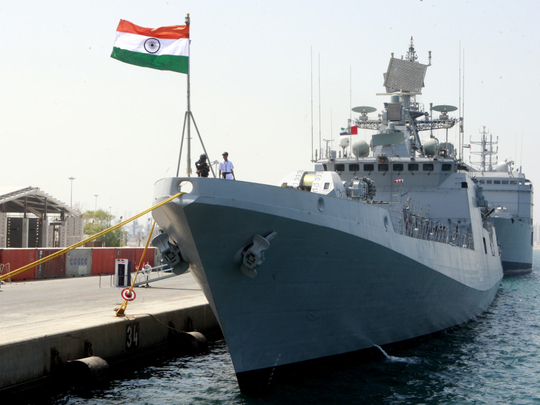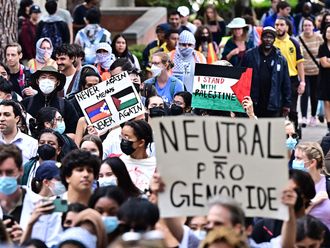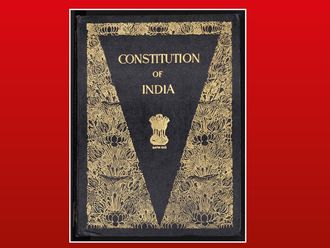
If you have the ear for political sound bytes, you would discern the nuances: In statements, discussions and lectures, some international strategists and experts with a penchant for the hyperbole, have lately been describing the vast geographic expanse called the Asia Pacific region as the Indo-Pacific region.
Such references reflect the changing perceptions about India’s future role in world affairs. Indeed, a number of countries would like India to play a more assertive role in world affairs, particularly in Asia, as part of calculations to create a balance in world affairs and “better manage” new players.
China, the big new player, has been rattling its neighbours with its belligerent posturing in the East and South China Seas. China has a dispute in the east with Japan over islands, which the Japanese refer to as “Senkaku” and the Chinese “Diaoyu”. In the South, China stakes claims to islands that are also claimed by several littoral states.
The islands would be “mere strips of land surrounded by water”, had they not been rich in natural resources, particularly oil and gas; China’s voracious appetite for energy, needed to push its industrialisation and future development, is driving its bellicose behaviour against other claimants. China is not just fighting for territory; it has eyed the mineral wealth under the islands.
The US administration has been encouraging India to increase its presence in the South China Sea. Indeed, at a recent event hosted by the Indian Consul General in New York, Dyaneshwar Mulay, the US Assistant Secretary of State for South and Central Asia, Nisha Desai Biswal, told me that the US would “welcome” India’s presence in the South China Sea.
“India has already been present in that region, as it works closely with some of the member states of the Association of Southeast Asian Nations (Asean),” Biswal said, adding that “India already plays a constructive role in the region.”
Indian officials and politicians have also expressed India’s interest in deepening its involvement in that region. Anil Wadhwa, the Secretary (East) in India’s Ministry of External Affairs, speaking at the Delhi Dialogue VI, an annual Asean-India dialogue, said that the channels of trade and communication and the South China Sea should be kept open.
The Strait of Malacca in the region is an important chokepoint for India’s sea trade, the bulk of which passes through this route.
Although India has maintained a low-key presence in the South China Sea, wary of spurring China to further increase its own naval operations in the Indian Ocean, Indian Navy’s first appearance in the waters in 2000 was a clear message to China that it would not hesitate to defend its energy investments in the waters near Vietnam.
Individual Asean member states, particularly Vietnam and the Philippines, are keen to see India play a greater role in the region.
While Vietnam has strengthened its naval activities to curb China’s expansionist plans, the Philippines took the matter to the United Nations, challenging China’s actions in the South China Sea. The Philippines, as China’s most vocal critic in Asean, has lambasted Beijing’s efforts to enforce its claim by seizing islets and establishing military facilities, aimed at creating a fait accompli situation in the latter’s favour. Manila also derided China’s display of offensive weaponry during its September 3 parade, which repudiated its professed desire for peace and harmony.
Besides China, the Philippines and Vietnam, other players staking claims to the South China Sea islands are Brunei, Republic of China (Taiwan) and Malaysia. The main disputes pertain to the Spratly and Paracel islands, as also the maritime boundaries in the Gulf of Tonkin and near Indonesia’s Natuna Islands. Besides controlling the massive crude oil and natural gas reserves under the islands’ waters, China’s control of the world’s densest shipping lane could endanger the sea-trade traffic of other claimants.
The abundant fishing opportunities within the region are another cause for discord in the region. China estimates that the combined fishing and oil value could be as much as a trillion dollars.
India, which through its state-owned oil company ONGC Videsh, is already collaborating with Vietnam in the South China Sea, has called for freedom of navigation on high seas, urging all countries in the region to respect the international conventions on the law of the sea in this issue.
Terms such as the United Nations Convention on the Law of the Sea and “freedom of navigation” have, meanwhile, crept into India’s South China Sea vocabulary. These terms referring to South China Sea were also embedded in joint US-India declarations issued on completion of Indian Prime Minister Narendra Modi’s visit to the United States in 2014 or during US President Barack Obama’s visit to India in January this year.
As India’s economic and strategic importance grows, it will be encouraged by others to play a more assertive role in world affairs, though it will unlikely get directly involved in third-party armed conflicts. While the idea of becoming a world policeman — or a proxy of another world policeman — is alien to India’s political culture, India will not be disinclined to play a greater regional role. India will forge closer military cooperation in the South China Sea with Asean claimant members, with Washington gently nudging it in that direction.
Manik Mehta is a commentator on Asian affairs.









